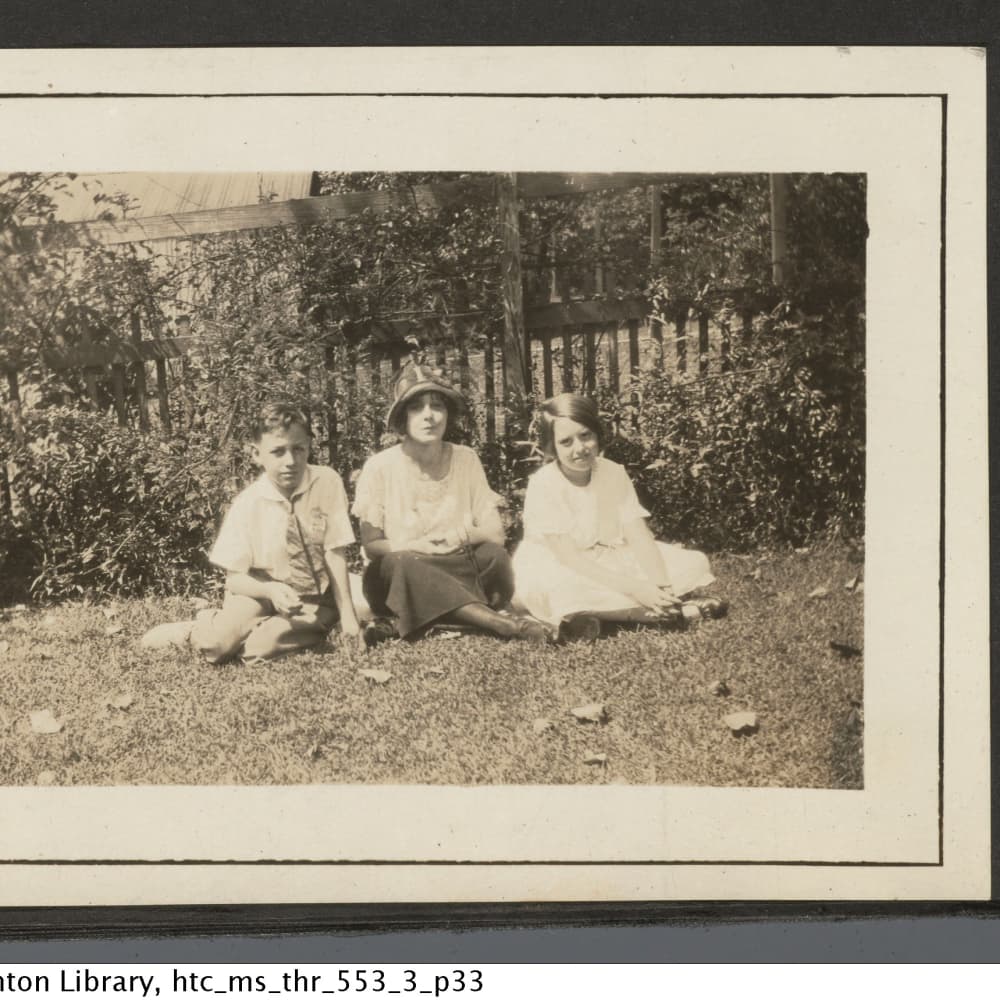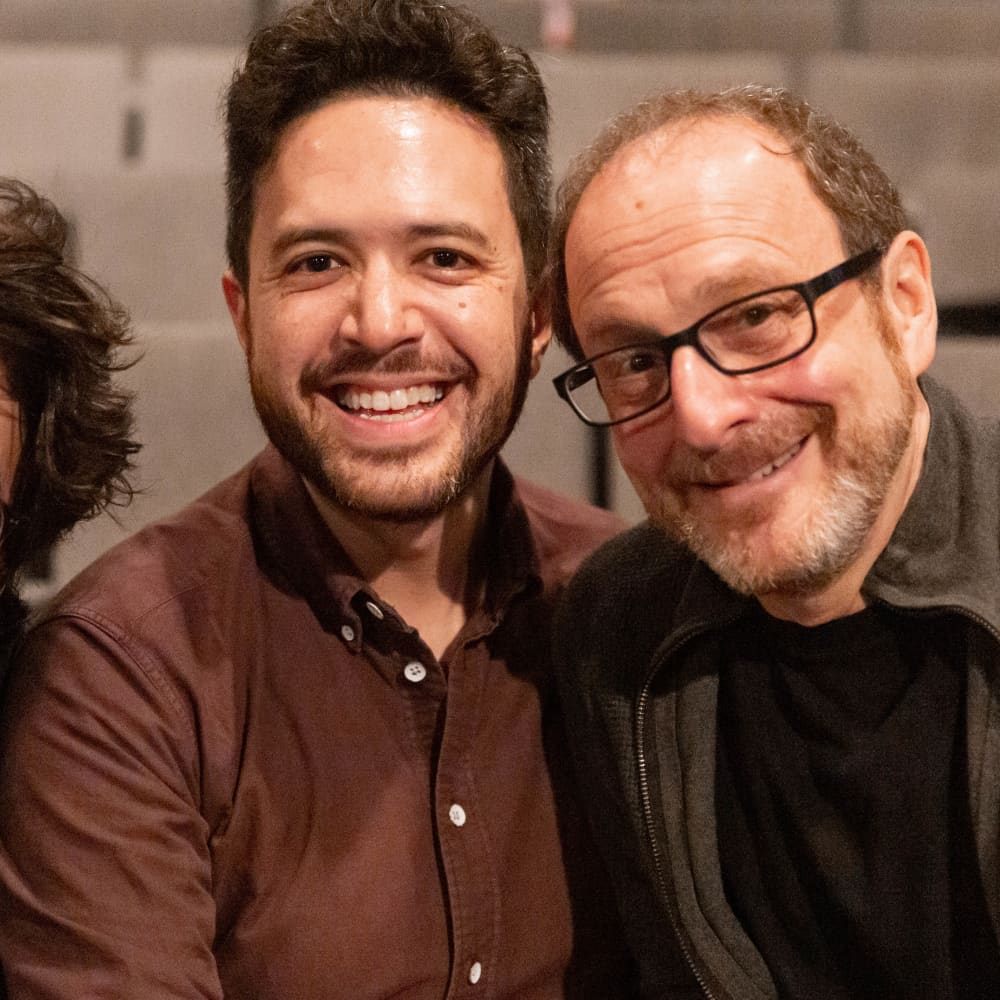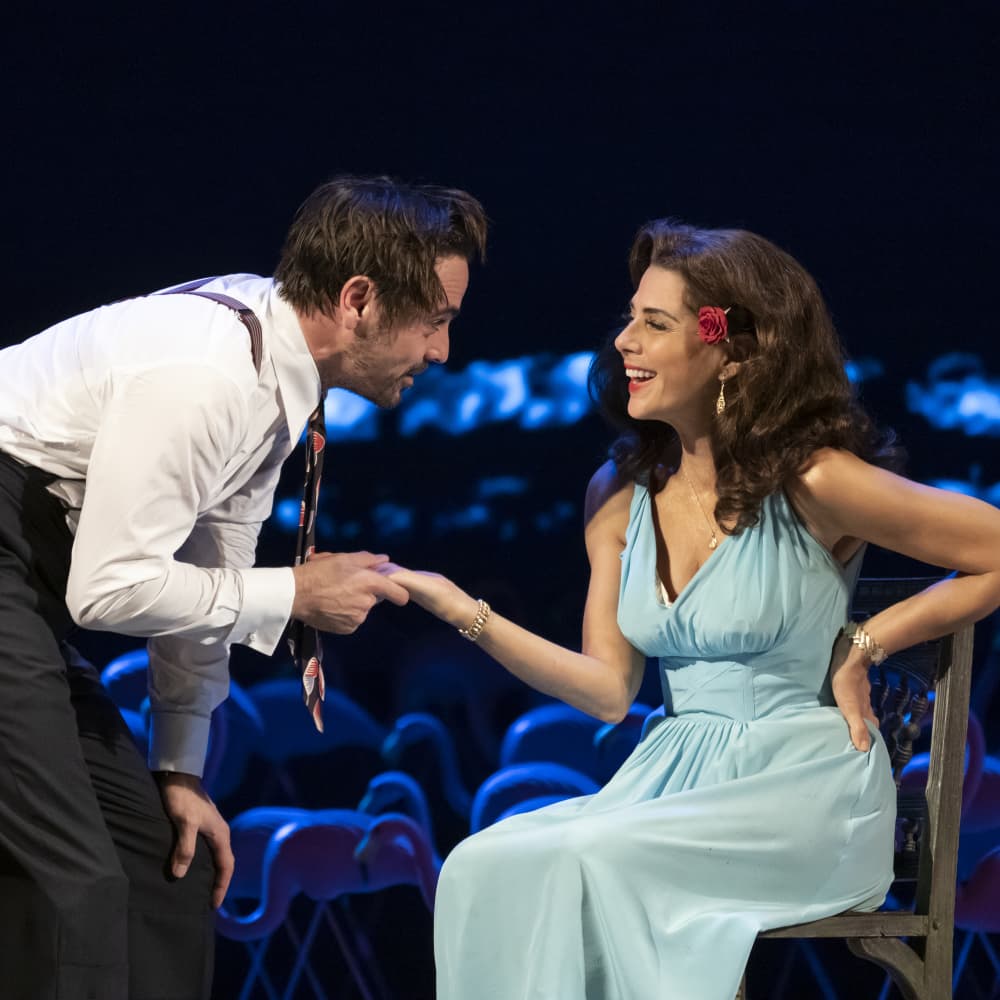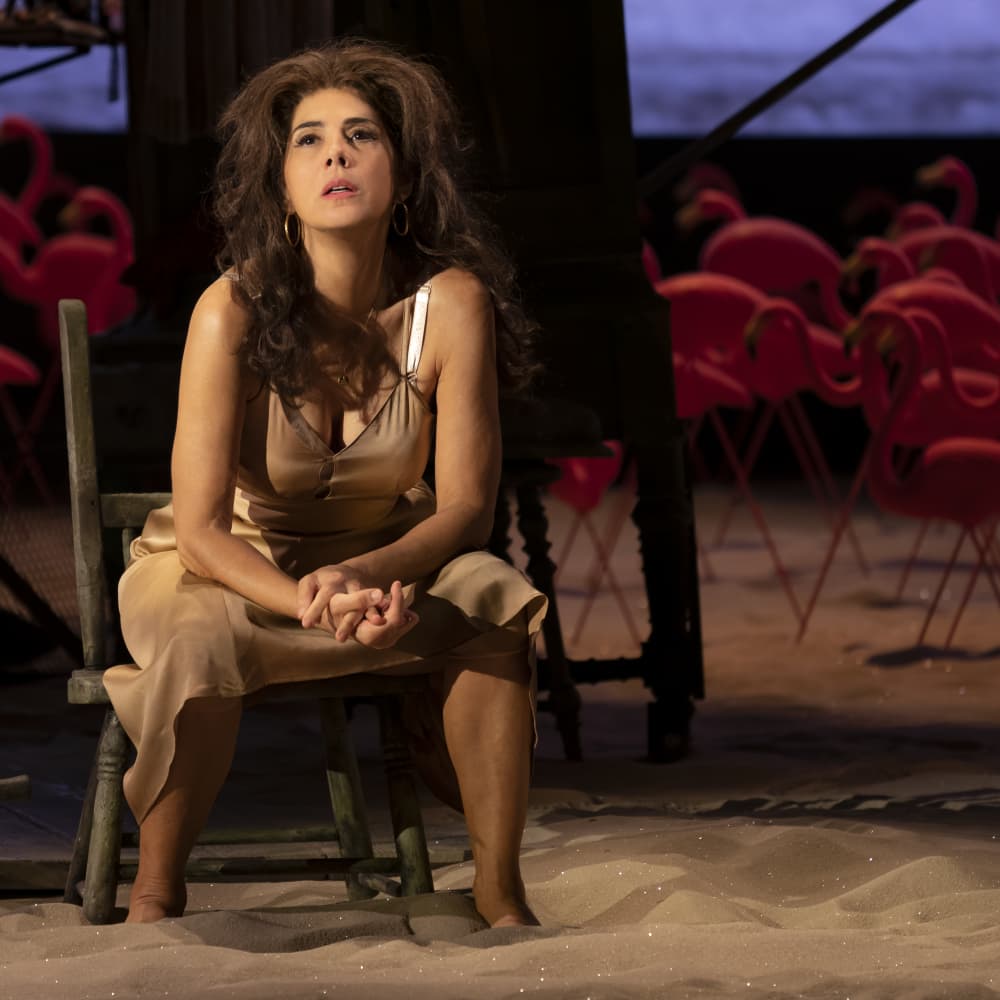The Rose Tattoo:
An Interview with Director Trip Cullman
Posted on: October 15, 2019
Education Dramaturg Ted Sod spoke with Director Trip Cullman about his work on The Rose Tattoo.
Ted Sod: Why did you want to direct Tennessee Williams’s 1951 play The Rose Tattoo? What would you say the play is about? How do you expect contemporary audiences will relate to it?
Trip Cullman: Tennessee Williams is one of my favorite playwrights. In grad school, I directed A Streetcar Named Desire for my thesis production.
I have always admired the poetry of his language, but for The Rose Tattoo, Williams wished to subsume the poetry of his dialogue so that the expressivity of his artistic sensibility was borne primarily by the visual. The play’s dialogue is quite earthbound and quotidian for Williams, yet the play is filled to the brim with visual symbolism – the goat expressing the Dionysian or water imagery expressing feminine mysticism, for example. I am striving with this production to give Williams the highly symbolic, visually poetic production of his work he always dreamed of.

Tennessee Williams, 1965
Orlando FernandezFor me, The Rose Tattoo is about the struggle between renunciation and connection, between living in the past versus living in the present, between adherence to tradition and liberation into self-fulfillment unbound by social conventions.
Serafina is a new arrival to the United States and brings with her the strictures and mores of her traditional Sicilian heritage. As such, in mourning the husband she idolized, she calcifies her life force – defining her existence wholly by eschewing desire, burying her sexuality in an apotheosis of grief.

Maureen Stapleton as Serafina and Don Murray as Jack in the original production of "The Rose Tattoo"
Photo by George Karger, Pix, IncWhen she meets Alvaro and learns the truth about her husband, she finally is able to unlock her heart and embrace life again. The Rose Tattoo illuminates the tremendous power of female sexuality -- especially when liberated from patriarchal mores.
The great majority of Williams’s plays end tragically. This play has a joyous ending. Given the deeply troubled times we currently live in, my hope is that audiences will leave the theatre buoyed by the capacity for love in us all.
TS: What research was necessary for you to do in order to direct The Rose Tattoo? Will you share some of what you learned from the preparation you did?
TC: Williams dedicated The Rose Tattoo to his lover Frank Merlo “in return for Sicily.” He and Merlo escaped to Italy for a year, a period Williams recalled as the happiest time of his life. His nickname for Merlo was “Little Horse,” which became Alvaro’s last name in The Rose Tattoo – Mangiacavallo, meaning “eat a horse.” The unhappiness of Williams’s childhood and young adult life -- filled with the mental instability of his sister and mother, his absent father, and the repression and shame around his sexuality – was washed away in the bliss of his love affair with Merlo. And this liberation became the underlying inspiration for Serafina’s liberation by Alvaro.
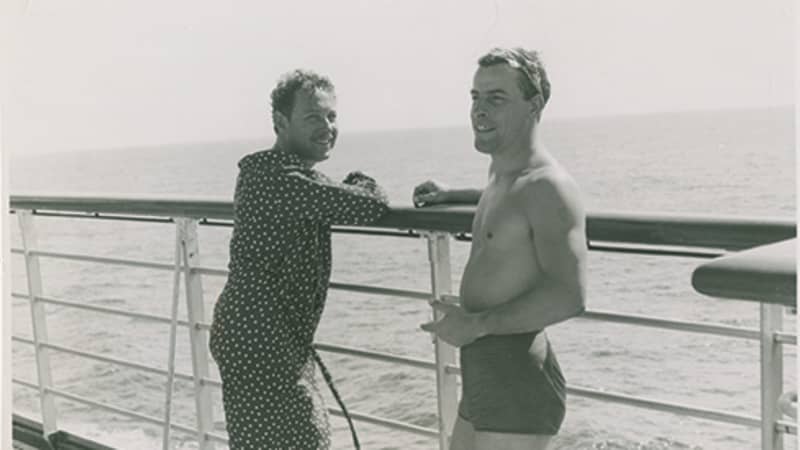
Tennessee Williams and Frank Merlo in an undated photograph
Rare Book & Manuscript Library, Columbia UniversityI like to think of The Rose Tattoo as perhaps Williams’s most personal work, and the character of Serafina as his most personal creative reflection of himself.
An enormous amount of research has gone into the preparation for this production. I studied the historical records of Sicilian immigrant communities in the Gulf states in the 1950s. I researched Sicilian folk music and the worship of the Black Madonna. I familiarized myself with the cultural and racial diversity of the Gulf regions. I learned Sicilian spells to ward off the evil eye.
If reading a Williams biography is of interest to audience members, I would most highly recommend John Lahr’s Tennessee Williams: Mad Pilgrimage of the Flesh. It was an invaluable resource in preparing to direct the play.
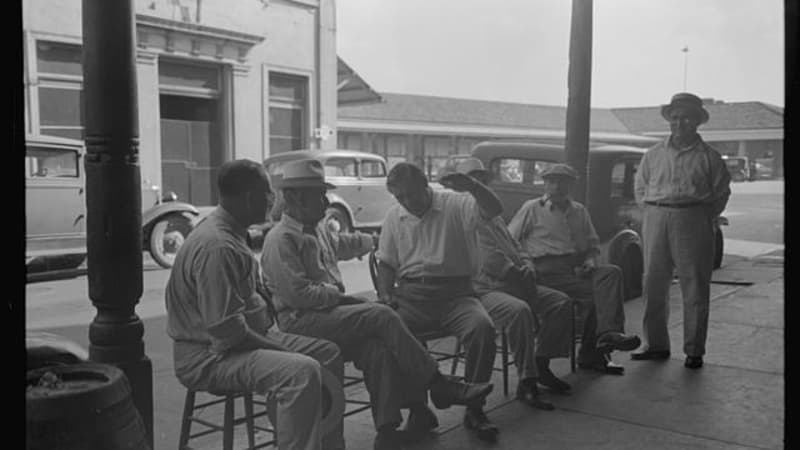
A group of Italians on Decatur Street in New Orleans, 1938
Photo by Lee Russell/Library of CongressTS: This play requires a huge cast. Are you employing doubling or even tripling in your production?
TC: We have a company of 21 actors – and that is after I cut some characters out of the original text! I love this play for so many reasons but one among them is that it is peopled primarily by women. So often, plays are written with mainly male characters. Shakespeare, for example, only has an average of three women characters in each of his plays. Here, that ratio is reversed.
I decided against doubling or tripling in this production. The reason for that choice is that it felt important to get a sense of the community surrounding Serafina. The play’s construction is quite odd – the second half consists mainly of two huge scenes between Serafina and Alvaro. The first half is a series of confrontations between Serafina and various denizens of her community. Several characters make a single appearance in the play and are not seen again. Were I to have doubled or tripled the casting of the actors, audiences wouldn’t get a true sense of the multiplicity of the world surrounding Serafina, nor of the unusual way the play is constructed.
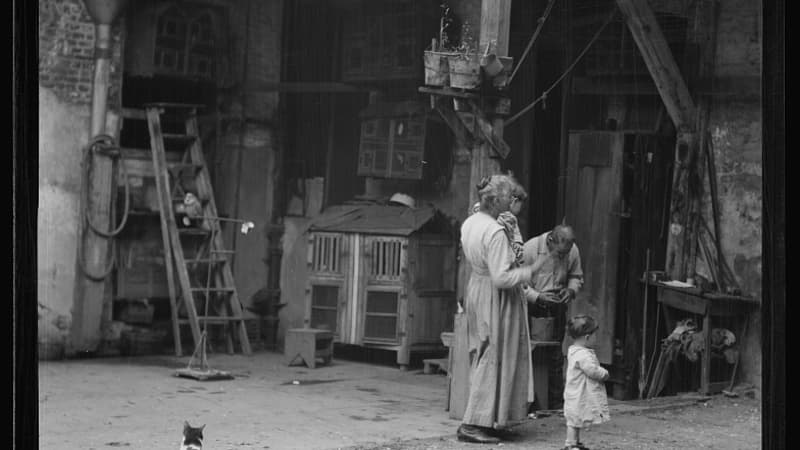
Courtyard of Italian home, New Orleans, before 1926
Photo by Arnorld Genthe/Library of Congress




